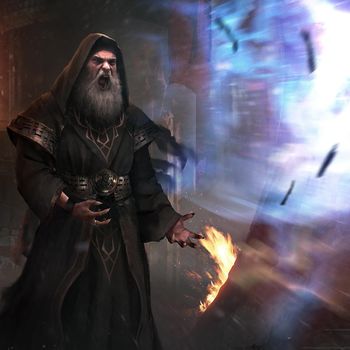User:Jimeee/Fiction/Facial Hair in Tamriel:Nords
| Book Information Facial Hair in Tamriel:Nords |
|||
|---|---|---|---|
| Up | The Styles of Facial Hair in Tamriel | ||
| Prev. | Chapter 3: Imperials | Next | Chapter 5: Altmer |
The Nords propensity for keeping facial hair is arguably the most noticeable across all the races of Tamriel. For Nords, beards are seen as sacred and as a defining feature of the gods in their ancient texts and also traditionally associated with strength and virility throughout Nordic history.
In ancient times historians deduce that the Nords precursors, the Atmorans, grew beards for warmth and protection from the inhospitable climate of Atmora. Facial hair kept these early men warm and it also protected their mouths from dirt, the sea and other elements.
Other, more fantastical theories suggest the Atmorans kept beards for more mythical purposes. The oldest accounts speak of Atmoran heroes and clever men who were said to visit the Sovngarde frequently. Those who made the journey back to Mundus bore unique symbols on their bodies, and grew large white beards to show their achievement, which garnered them much respect. By the time of Ysgramor, journeys to Sovngarde became a rarity but the cultural significance surrounding breads remained and became commonplace.
The earliest accounts of Ysgramor and the Five Hundred are replete with descriptions of their imposing appearance (most of which mention their great, braided beards) that was said to have struck fear into the hearts of their enemies. Such was their reverence for beards that numerous ballads and sagas pay homage or are even dedicated to them. Skerdmsksaga is an extensive text where countless references are made to not only associate beards with masculinity and honor, but also to greatly insult and disparage any man who did not sport a beard. Once the Nordic Pantheon was established, many of their gods were described in traditional and sacred texts, as well as illustrated throughout Norse history, as sporting a beard. It is no surprise that the tradition of keeping large beards formed and lasted across the eras.
Among Nords, beards were generally venerated and their owners respected — at the same time, it was a common punishment in the First Era for Nords to shave off a man's beard for some kind of wrongdoing. Similarly, it was common practice to cut off the beard of a defeated opponent in order to disgrace them further.
Indeed, the mandatory keeping of the beard for a seated Jarl was enshrined into law by King Haknir the Baleful, whose own beard was said to be so large and impressive that it was tended to by no less than four beard-maidens. King Kjoric Frost-Blade grew such a luscious, flowing beard that he is today known not by his clan-name, but by the color of his whiskers - Kjoric the White.
The Greybeards, who were the disciples of Jurgen Windcaller, came to wear a messy, upbraided and unadorned beards. Compared to their contemporaries at the time, the Greybeards were radicals, both in style and in substance. The Way of the Voice relied exclusively on virtue, neglecting all that is physical. Therefore, the long and messy beard of a Greybeard was indeed a true fashion statement, one that resonated with the way of life and the philosophy they were advocating.
In 1E 2804, High King Bjorick (remembered across the north as "Bootlicker Bjorick") tried to imposed a beard tax to encourage Nord men to shave their traditional beards as part of his drive to Imperialize Skyrim and curry favor with Reman II. The new law decreed that men who continued to wear beards but refused to pay the tax would be forcibly shaven. In practice his decree utterly failed, and resulted in his violent deposition shortly after. This is best illustrated by the famed Hjerek Tapestry, which depicts a group of angry hirsute Nords atop the great arch of Solitude tossing King Bjorick head-first into the Sea of Ghosts.
